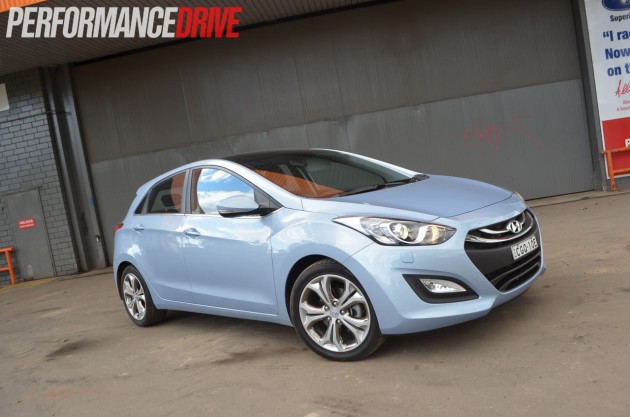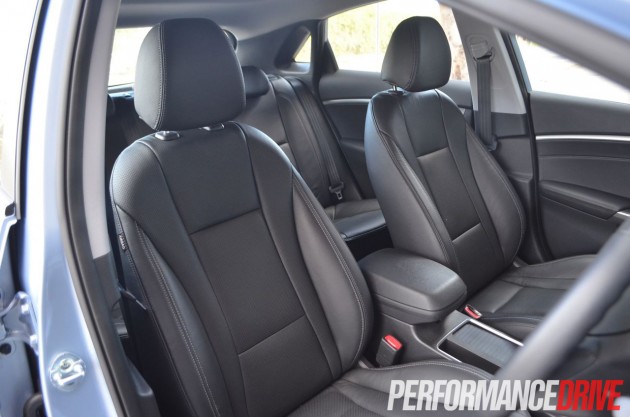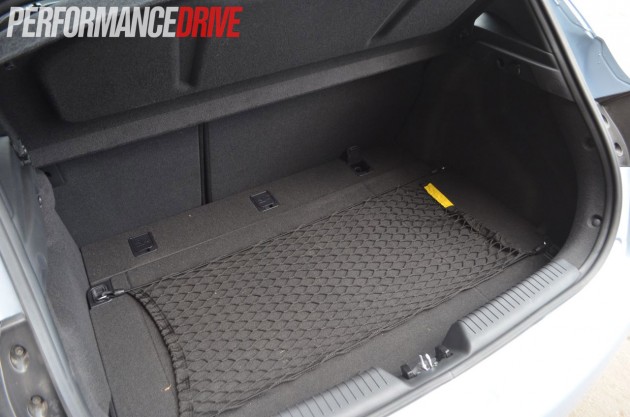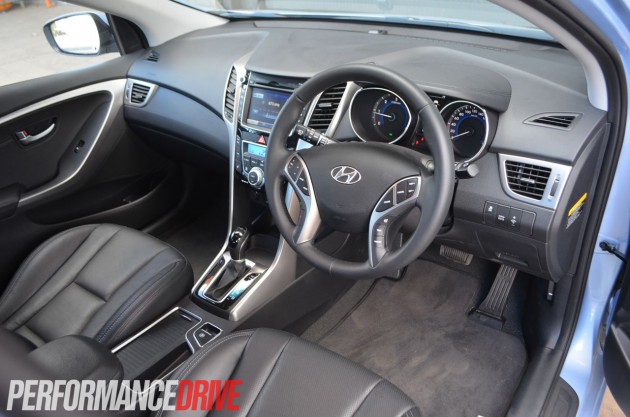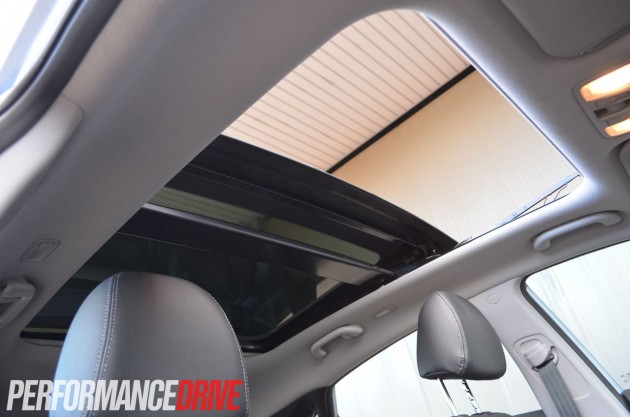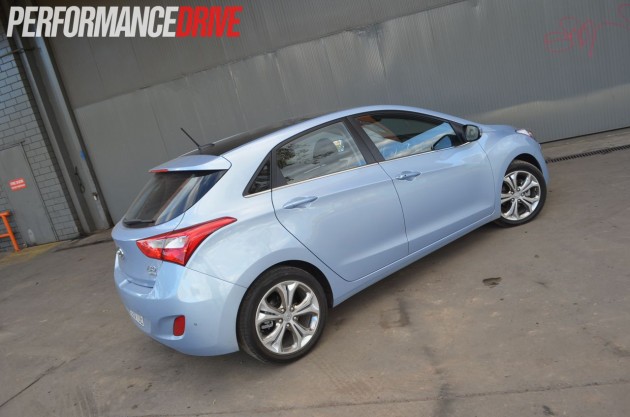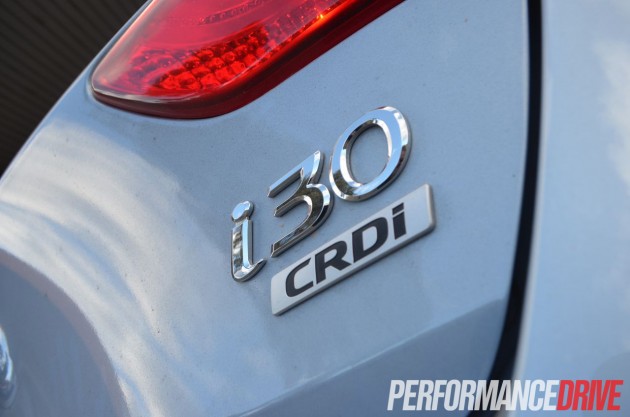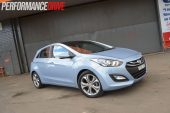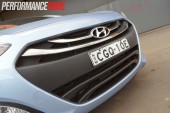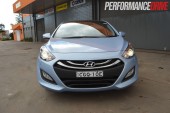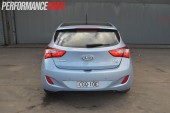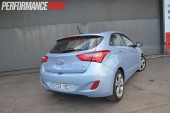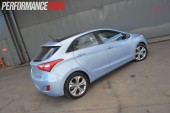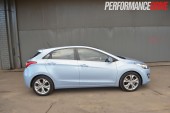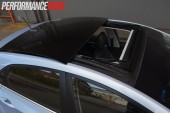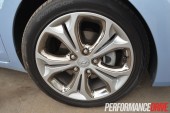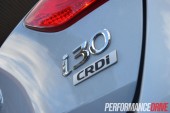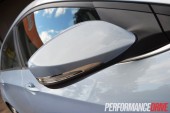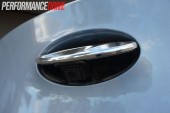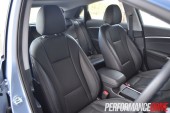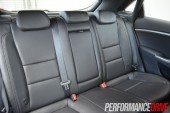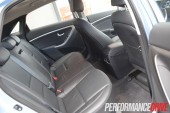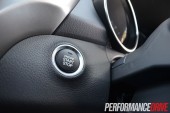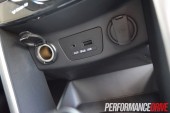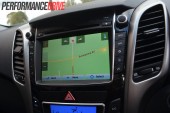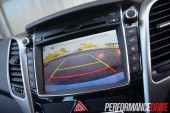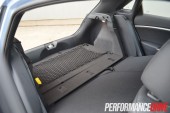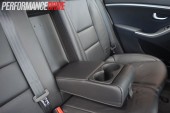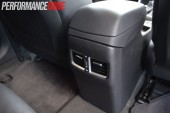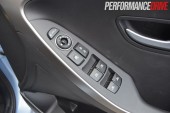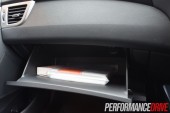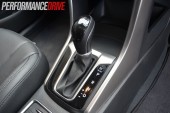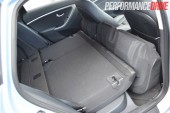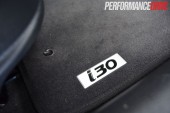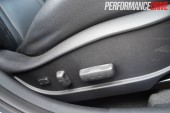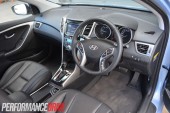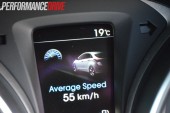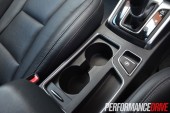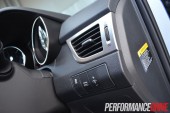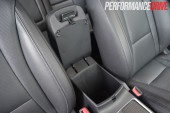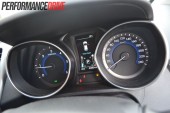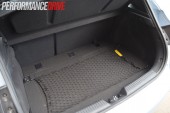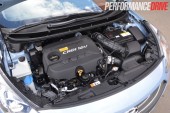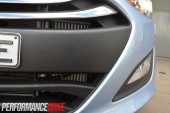The 2012 Hyundai i30 Premium CRDi offers exceptional value for money thanks to excellent fuel economy, loads of interior delights, fresh styling, and inviting driving dynamics.
2012 HYUNDAI i30 PREMIUM CRDi – PROS AND CONS
PROS:
- Sharp styling
- Comfortable/spacious interior
- Punchy turbo-diesel engine
- Loads of standard kit
CONS:
- Electric steering lacks feel
- Chrome highlights on wheels aren’t to everyone’s taste
- Interior a touch on the plastic side
2012 HYUNDAI i30 PREMIUM CRDi – OVERVIEW
Sitting at the top of the i30 list, the Premium model is filled with just about everything you could ever need in a daily commuter. It’s comfortable, stylish, and it’s one of those cars that is easy to scoot here, there and everywhere in.
And you’ll be likely to do just that considering it sipped a combined average of just 6.5L/100km during our test (official average: 5.6L/100km). The economy is down to a 1.6-litre turbo-diesel four-cylinder engine which produces 94kW and 260Nm.
The six-speed auto Premium CRDi diesel model is priced from $32,590, with no option of a manual transmission.
Like all Hyundais, the i30 comes with an outstanding five-year unlimited kilometre warranty, and also features Hyundai’s capped price iCare servicing ($289 per service, every 15000km).
2012 HYUNDAI i30 PREMIUM CRDi – ACCOMMODATION AND EQUIPMENT
Probably the best thing about the i30 is how much kit you get in the Premium model. Standard equipment includes HID headlamps, a panoramic glass roof, leather trim with heated front seats, power mirrors, dual-zone climate control, USB and Bluetooth connectivity, 10-inch touchscreen navigation/entertainment system with SUNA traffic management, keyless entry, cruise control, a reversing camera, and an auto-dim rear-view mirror.
The newest i30 has a more open/spacious feel to it over the model it replaces, with ample leg, head, and shoulder room for all occupants. The front seats are supportive and comfortable for daily commuting, but not overly padded in terms of lateral support.
While the leather material isn’t the best we’ve ever parked our behinds on, it’s definitely not the worst. It’s relatively soft and seems hard-wearing.
We found it very easy to settle in and get comfortable in the i30, as both a driver, and passenger. All of the i30’s buttons and knobs are easy to find and to interpret, making for quick easy adjustment on the go.
Storage-wise, the i30 has loads of little compartments and slots for everything like drink bottles, sunglasses, road maps, and smartphones. It even has both front and rear cup holders (featured in the centre armrest).
Boot space is 378 litres (easily big enough to fit a pram, five or six bags of groceries, and a gym bag, extending to 1316 litres with the 60/40 split rear seats laid flat – great for when you need to pick up that 3D LED TV you’ve always wanted.
The boot capacity is larger than what most of the popular rivals offer; Mazda3 (340L), 2013 Toyota Corolla (280L), Ford Focus hatch (317L), Volkswagen Golf (350L, yet-to-be launched 2013 model; 380L).
2012 HYUNDAI i30 PREMIUM CRDi – DESIGN AND SAFETY
Designed and engineered at the Hyundai Motor Europe Technical Centre in Russelsheim, Germany, the all-new i30 feels a much more refined unit than the previous model. That said, if you’ve driven the first-gen i30, it certainly wasn’t a bad egg.
As you can see from the pictures, styling for the new i30 isn’t as conservative as the previous version. The hexagonal front styling is in line with the rest of Hyundai’s latest designs, while the angular rear and sweeping C-pillars give the car a solid look on the road.
Externally, the Premium model differentiates itself from the base model thanks to a chrome grille between the headlights, a full panoramic glass roof, and 17-inch alloy wheels with chrome highlights.
All Hyundai i30 variants achieve a full five-star ANCAP safety rating. Inside you’ll find driver and passenger airbags, side impact airbags, full-length curtain airbags, and driver’s knee airbag. Other safety features include ABS, vehicles stability control, and brake assist with brake force distribution.
2012 HYUNDAI i30 PREMIUM CRDi – ON THE ROAD
Not for a second does the little 1.6-litre turbo diesel feel like it’s running out of oomph, no doubt thanks to a decent 260Nm shove available from as low as 1900rpm. The sweet spot and strong point is its mid-range punch, and roll-on acceleration. There’s little in the way of turbo lag or hesitation.
Mated with the diesel engine is a conventional six-speed automatic, that, when combined with pretty much lag-free performance, sifts through the gears with little effort. Around town gear changes are seamless and smooth, while kick down during overtaking is sharp and responsive. We timed 0-100km/h in a respectable 9.9 seconds.
Hyundai decided to fit the latest i30 with its electric steering system – much like you get in the Hyundai Veloster and Veloster Plus.
From inside the cabin, the driver is able to adjust steering settings between Sport, Comfort and Normal – it’s a feature Hyundai dubs ‘Flex Steer’. Each setting alters the power assistance level to provide a different weight/feel. It doesn’t change the rack speed or anything like that, it simply changes weight.
After mowing down some winding roads, we found the heaviest setting (Sport) made the car feel the slightest bit more controllable, but that’s about it. Around town, you definitely want it in the Normal setting.
Hyundai Australia takes pride in tuning suspension settings locally, to actual Australian road conditions. We found the i30 confident and predictable at slow-to-medium speeds, with mid-corner bumps doing little to upset the car’s stability. It’s a just shame there isn’t a lot of feedback through the electric steering.
Front end grip is good during turn in, even during high-speed cornering, but push too hard and it’s definitely keen to push the front wide.
Ride comfort is a happy medium of not too soft, not too hard, keeping passengers comfortable and composed.
2012 HYUNDAI i30 PREMIUM CRDi – VERDICT
If you’ve driven any of Hyundai’s new vehicles, you’ll know they’re quite impressive in terms of value for money. The five-year unlimited kilometre warranty gives consumers great confidence knowing their investment is in safe hands.
With its $32,590 price tag, consider the warranty, the fuel consumption, the classy styling, the no-fuss performance of the turbo-diesel engine, and the amount of standard kit you get, there’s a lot of reasons to park one in your driveway. This is a car that does what’s asked of it very well.
2012 HYUNDAI i30 PREMIUM CRDi – THE COMPETITORS
Ford Focus Titanium TDCi hatch– 2.0-litre turbo-diesel four-cylinder, 120kW/340Nm – 1537kg – $36,490
One of the most popular vehicles in this segment, the Focus 2.0-litre diesel is one of the most powerful in this segment. Good fuel economy (5.5L/100km) and perhaps the most energetic/active handling of the lot.
Holden Cruze CDX Diesel hatch – 2.0-litre turbo-diesel four-cylinder, 120kW/360Nm – $31,040 (auto)
Third-best selling hatch in this segment in 2012, behind the Mazda3 and Corolla. Very torquey 2.0-litre diesel with excellent fuel economy (5.6L/100km). Benchmark pricing.
Opel Astra Select hatch – 2.0-litre turbo-diesel four-cylinder, 121kW/350Nm – $33,990 (auto)
All-new model in Australia, the Astra offers superb German build quality matched with swoopy attractive styling. It’s also packed with innovative features and is as efficient as the key rivals (5.9L/100km). Great handling too.
Peugeot 308 Allure HDi – 2.0-litre turbo-diesel four-cylinder, 120kW/340Nm – 1427kg – $37,990
Based on the Mini Cooper chassis, the 308 is a keen handling car. Fitted with loads of kit, the Allure model boasts European styling inside and out. It is priced at the higher end of the diesel hatch scale, which could deter some people.
Volkswagen Golf 2.0 103TDI DSG Comfortline – 2.0-litre turbo-diesel four-cylinder, 103kW/320Nm – 1380kg – $34,490
When it comes to diesel hatches, VW does them very well. All it takes is one look during peak hour traffic to see how many VW TDIs there are on the road. They handle great, have smart and high-quality interiors, and perform well. The DSG isn’t to everyone’s taste though, and neither is very conservative styling.
2012 HYUNDAI i30 PREMIUM CRDi – SPECIFICATIONS
MODEL
2012 Hyundai i30 Premium CRDi
ENGINE
1.6-litre turbo-diesel four-cylinder, common-rail direct injection (CRDi)
ENGINE SIZE / COMPRESSION RATIO
1582cc / 17.3:1
BORE X STROKE
77.2mm x 84.5mm
POWER
94kW@4000rpm, 260Nm@1900-2750rpm
POWER TO WEIGHT RATIO
15.0: 1 (kg:kW)
KERB WEIGHT
1413kg
HEIGHT / WIDTH / LENGTH
1470mm / 1780mm / 4300mm
DRIVETRAIN
Six-speed automatic transmission, front-wheel drive
BRAKES
F: 280mm ventilated discs
R: 262mm solid discs
WHEELS / TYRES
F and R: 17- x 7-inch alloy, 225/45 R17
FUEL TANK CAPACITY
53 litres
FUEL TYPE
Diesel
FUEL CONSUMPTION
Tested average: 6.5L/100km
Official average: 5.6L/100km
PERFORMANCE
0-100km/h: 9.9 seconds (tested)
PRICED FROM
$32,590
WARRANTY
Five-year/unlimited kilometre
